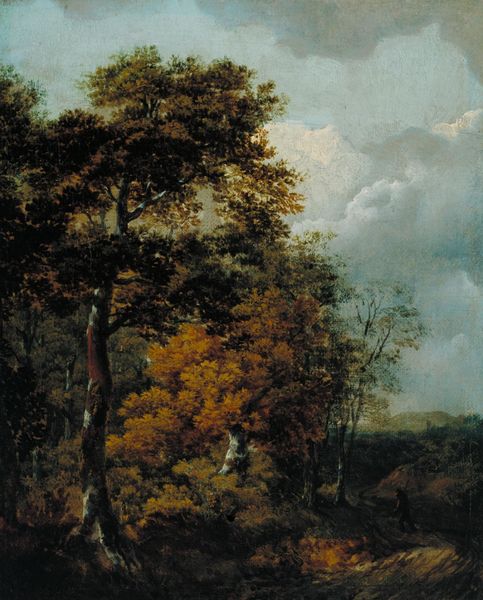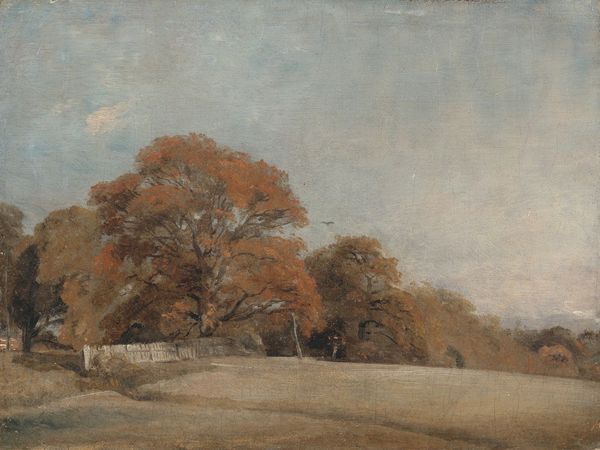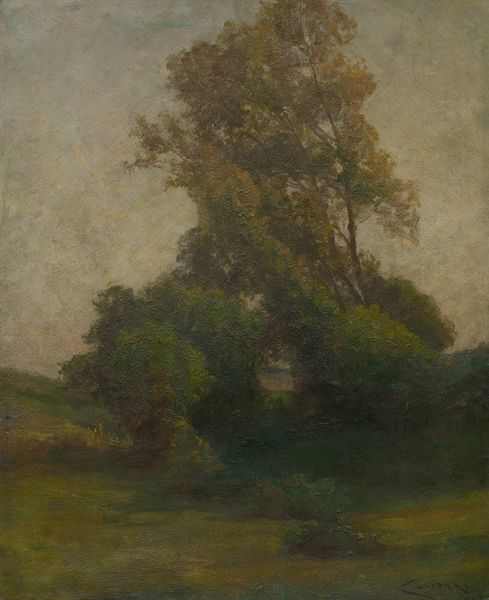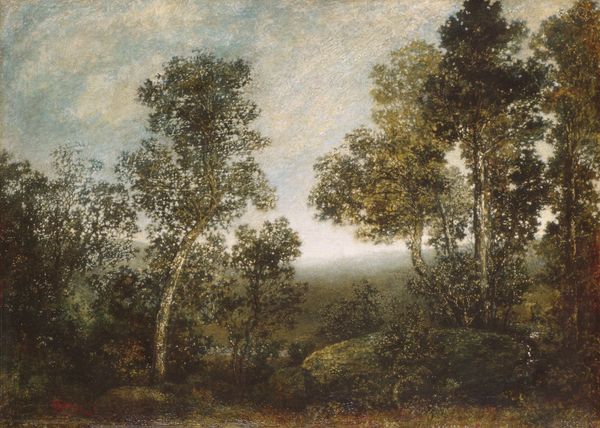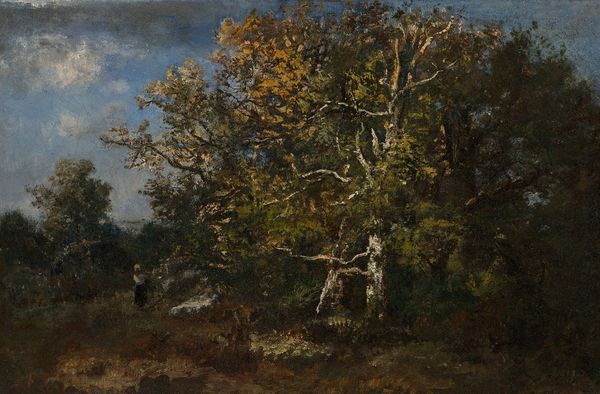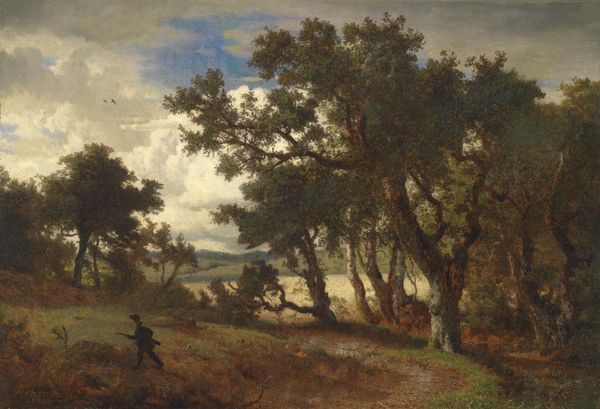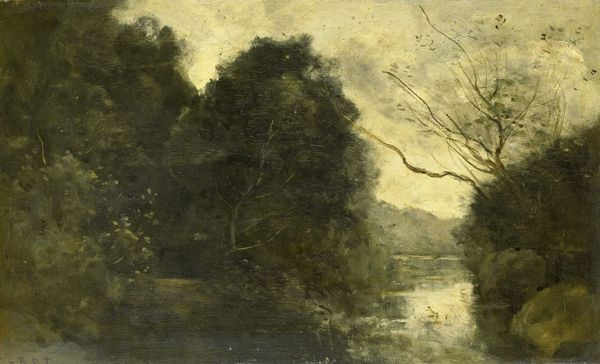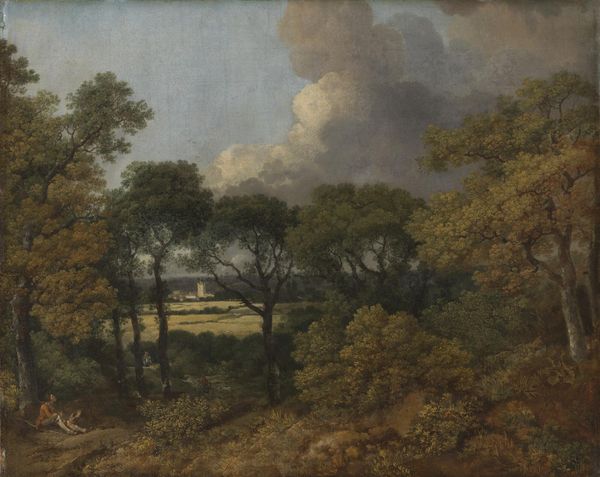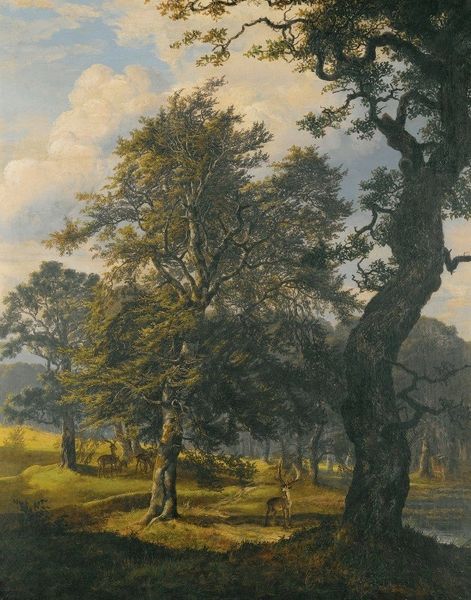
painting, plein-air, oil-paint
painting
plein-air
oil-paint
landscape
charcoal drawing
form
oil painting
romanticism
Copyright: Public Domain: Artvee
John Constable’s “Study of an Ash Tree” is an exercise in close observation, recording the transient effects of light on the natural world. Painted in England, most likely in the early 19th century, this work reflects a shift in artistic values. Where once landscape served as a backdrop for historical or allegorical scenes, here it takes center stage. Constable’s focus on the ordinary, on the specific qualities of a place and time, aligns with broader social and cultural changes. The Industrial Revolution was transforming the English countryside, and with it, traditional ways of life. Constable's art can be seen as a response to these changes, a way of preserving and celebrating the beauty of the natural world. To understand the painting fully, we can look at the writings of the time, the development of scientific approaches to landscape, and the changing role of the artist in society. Approaching the artwork in this way, we come to understand art as contingent on social and institutional context.
Comments
No comments
Be the first to comment and join the conversation on the ultimate creative platform.
